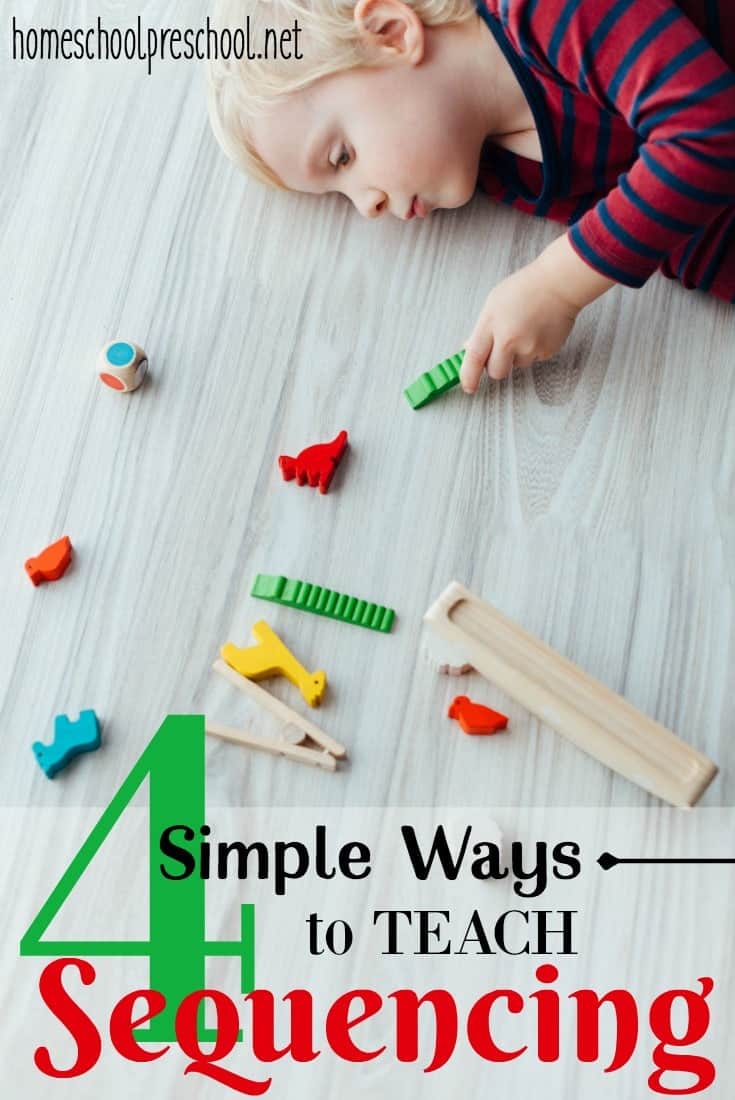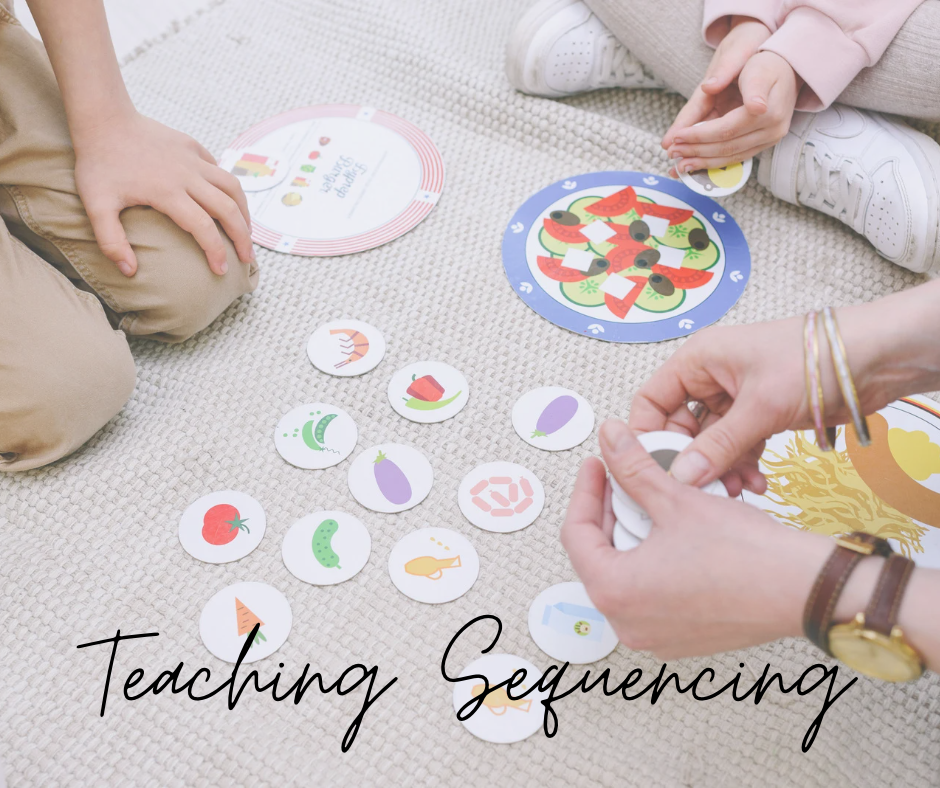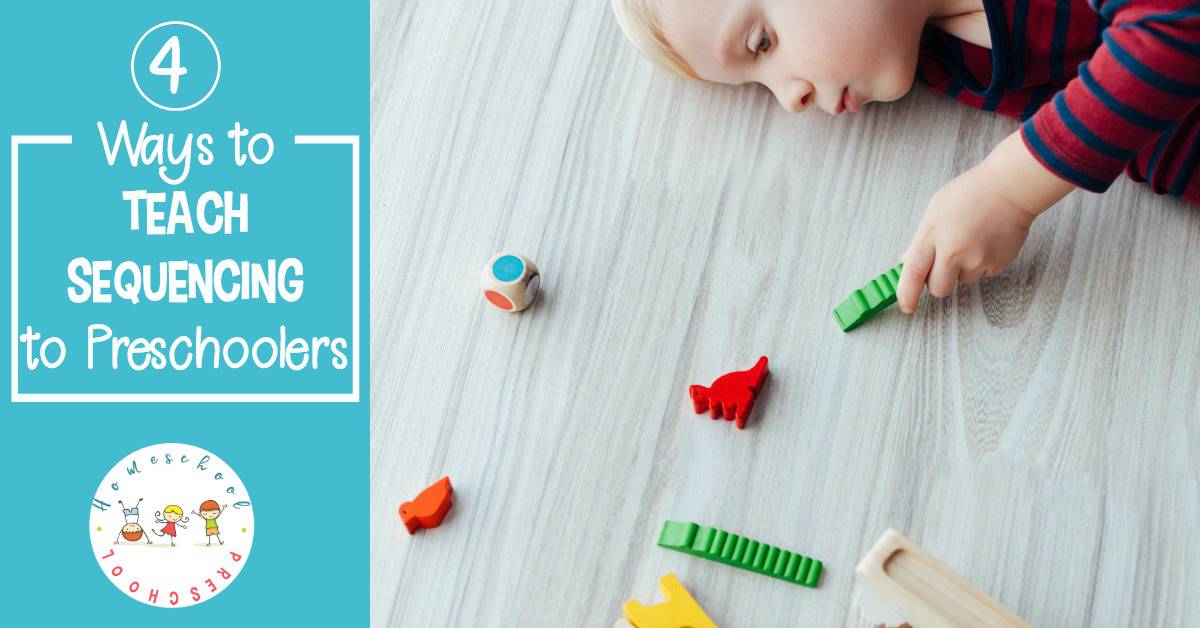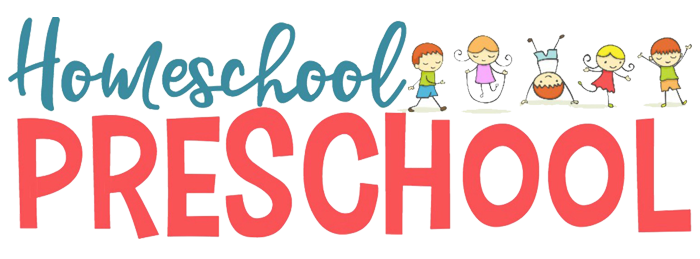4 Ways to Teach Sequencing to Preschoolers
Understanding sequencing is a very important concept that children need to develop in order to have success in school and beyond. But what exactly is it and how can you teach sequencing to preschoolers?
Sequencing is the ability to understand the sequence of events or order of events in a story, task, or activity. It’s a difficult concept for preschool children to grasp as it requires abstract thinking which can be difficult for them.
However, with some patience and creativity there are several ways parents can teach their young students about sequencing.
In this blog post we will discuss four fun activities (including using sequencing cards) that will help teach your little ones how to recognize the sequence of events!

Introducing the concept of sequencing to preschoolers can be a challenging task as they lack the abstract thinking skills that are necessary to comprehend it.
However, it’s an important skill to teach them, as it will help them develop their language skills and set them up for success in school.
Today, we’ll explore some hands-on sequencing activities you can do with your preschoolers anytime.
Teach Sequencing to Preschoolers
It is important for preschoolers to understand sequencing because it helps them learn how to recognize patterns and orders of events.
It also helps them develop their language skills and be ready for school. With some creativity and patience, there are several ways to teach sequencing to your preschoolers.
Here we will discuss four activities that you can do with your little ones. With these tips, you can teach your preschooler how to recognize sequence of events and set them up for success in their academics!
Have daily routines.
Implementing a daily routine can be an invaluable tool for young learners as it helps them to learn sequencing and the essential skills of following directions.
With a clear, consistent schedule providing structure, children will understand when daily activities occur and what comes next.
This exposure to reliable repetition will enable them to create mental maps of how routine tasks are connected in succession.
When a child is familiar with the order of events within their daily routine, they can more easily remember and recall information as well as focus on the task at hand.

Talk about the stories you read.
Reading stories aloud to preschoolers is a great way to teach them about sequencing.
Stories provide an easy and fun way for children to explore the concepts of beginning, middle and end, which are essential skills for understanding how events unfold.
Every story has its own special version of how things happen – from ordering characters by when they appear in the story to sequencing events within a chapter or across multiple stories.
By talking about how the parts of each story fit together, kids learn important lessons about how the world works and gain confidence in their ability to figure out what comes next.
Practice story sequencing with our free printables.
Use ordinal numbers.
Teaching preschoolers about sequencing using ordinal numbers is an effective way for young children to understand the concept of sequence. You can incorporate ordinal numbers in your everyday conversations.
Ordinal numbers – such as first, second, third, etc. – provide a concrete way for kids to identify a specific point in the sequence of events.
By counting up from 1-20 and then backwards from 20-1, children develop familiarity with how to count through the steps and learn how to recognize the orderliness of sequences.
Additionally, having children match items in sequences helps them identify patterns and better comprehend the logic behind all types of events.

Play with sequencing cards.
Playing with sequencing cards is a great way for kids to practice their sequencing skills.
Sequencing cards provide a visual reminder of events and come in all shapes and sizes, with pictures of various events or items that need to be put in logical order.
By arranging the picture cards in the correct order, children get a hands-on experience that helps them understand the concepts of sequence and order.
Furthermore, it reinforces the idea that objects have relationships between them and teaches children how to recognize patterns and identify important steps along the way.
Check out all of our printable sequencing cards.
More Sequencing Resources
You should be able to find these items at your local department store. If not, you can order them directly from Amazon by clicking the “buy now” buttons below.
Teaching sequencing to preschoolers is an important educational tool that helps with language development, understanding patterns and orders of events, and being prepared for the academic challenges of school.
With this knowledge, children can begin to make mental maps of different tasks in succession and better remember and recall information.
Sequencing activities are a great way to teach children about this abstract concept. By introducing sequencing activities into your preschooler’s daily life, they can gain a better understanding of this abstract concept and be ready for their academic journey.
Good luck!









